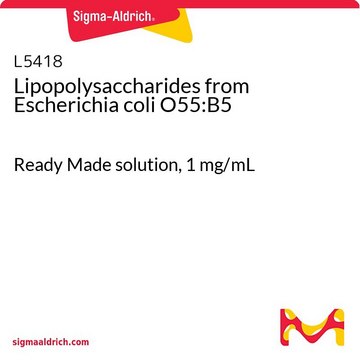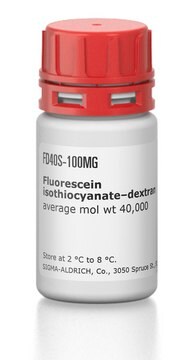MAK339
Lipopolysaccharide (LPS) Isolation Kit
sufficient for 10 isolation(s)
Iniciar sesiónpara Ver la Fijación de precios por contrato y de la organización
About This Item
UNSPSC Code:
12161503
Productos recomendados
usage
sufficient for 10 isolation(s)
application(s)
sample preservation
storage temp.
−20°C
General description
The outer membrane of gram-negative bacteria contains lipopolysaccharide (LPS), a low molecular weight carbohydrate with a molecular mass of 10-20 kDa. It is heterogeneous and composed of O antigen (a repeating glycan polymer), core oligosaccharide (which links the O antigen to Lipid A - the third component, and non-carbohydrate components such as phosphate and amino acids groups. Lipid A, has multiple fatty acids which serve to anchor LPS into the bacterial membrane allowing the O antigen and core oligosaccharide to protrude and contributes to a major part of the toxicity of gram-negative bacteria. Also known as endotoxin, when consumed by animals, LPS induces a strong inflammatory response and/or sepsis.
Suitability
Suitable for the isolation of Lipopolysaccharides from outer membrane of gram negative bacteria.
Principle
The Lipopolysaccharide (LPS) Isolation Kit uses bacterial membrane lysis buffer and protein digestion to yield micrograms of LPS from bacterial culture (approximately 1-4% of dry weight). This kit does not use chloroform or phenol like traditional methods, and it will yield pure LPS in less than 2 hours that can be easily characterized and quantified.
signalword
Danger
hcodes
Hazard Classifications
Met. Corr. 1 - Resp. Sens. 1
Storage Class
8A - Combustible, corrosive hazardous materials
wgk_germany
WGK 1
flash_point_f
Not applicable
flash_point_c
Not applicable
Certificados de análisis (COA)
Busque Certificados de análisis (COA) introduciendo el número de lote del producto. Los números de lote se encuentran en la etiqueta del producto después de las palabras «Lot» o «Batch»
¿Ya tiene este producto?
Encuentre la documentación para los productos que ha comprado recientemente en la Biblioteca de documentos.
Zhiyuan He et al.
Frontiers in nutrition, 9, 864080-864080 (2022-04-12)
Calf diarrhea induced by enteroaggregative E. coli (EAEC) spreads fast among young ruminants, causing continuous hazard to dairy industry. Antimicrobial drug abuse aggravates the incidence rate of multi-drug resistant (MDR) extended-spectrum β-lactamase-producing E. coli (ESBL-EC). However, knowledge of detection and
Nuestro equipo de científicos tiene experiencia en todas las áreas de investigación: Ciencias de la vida, Ciencia de los materiales, Síntesis química, Cromatografía, Analítica y muchas otras.
Póngase en contacto con el Servicio técnico





